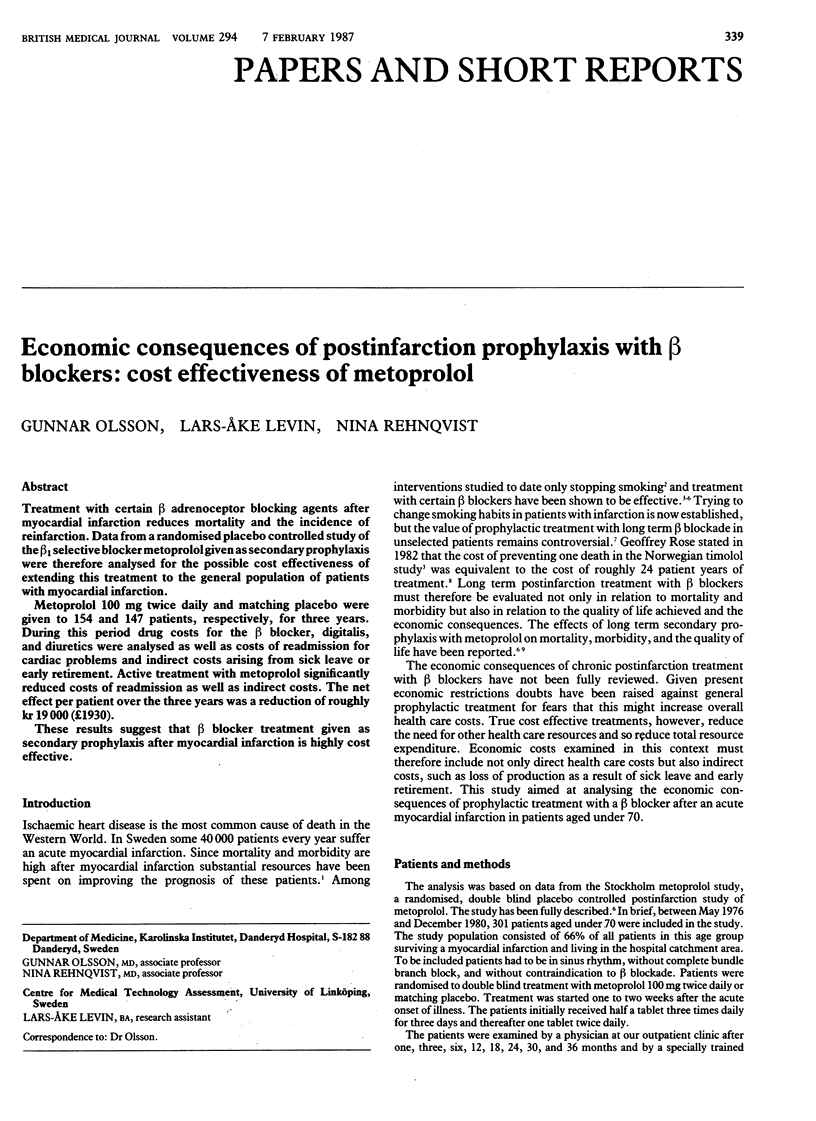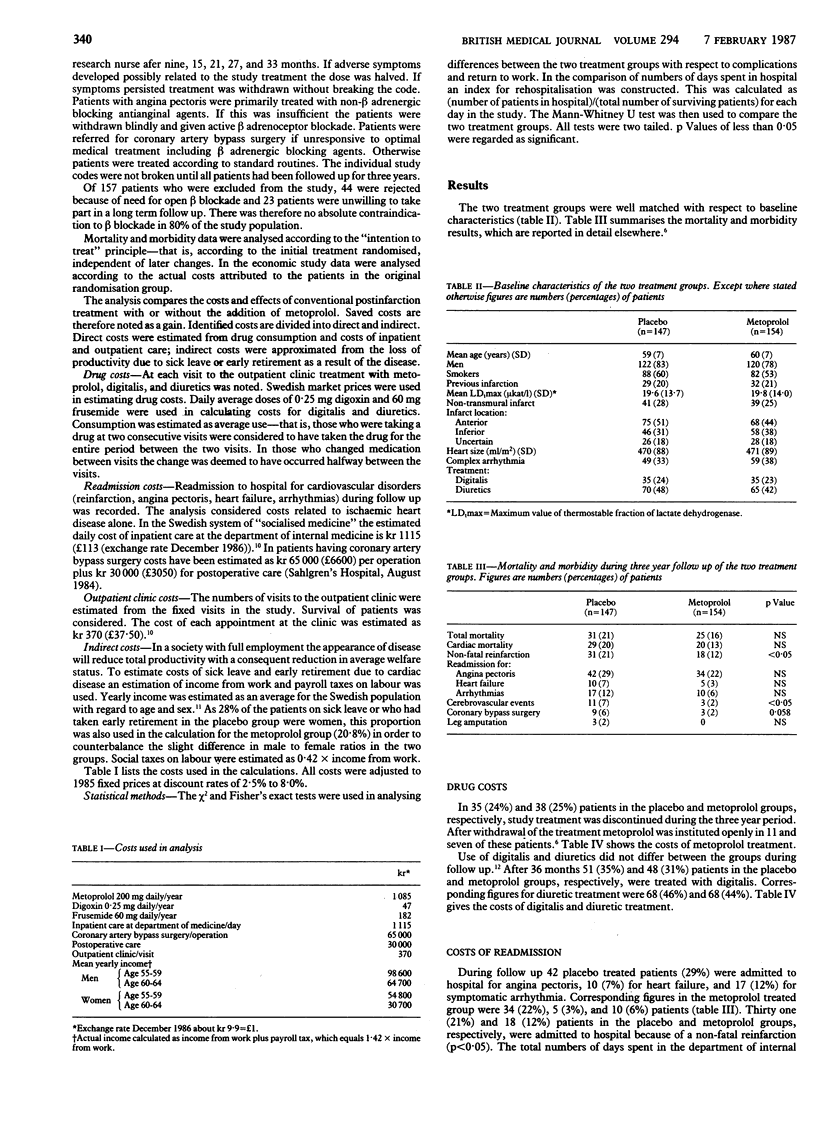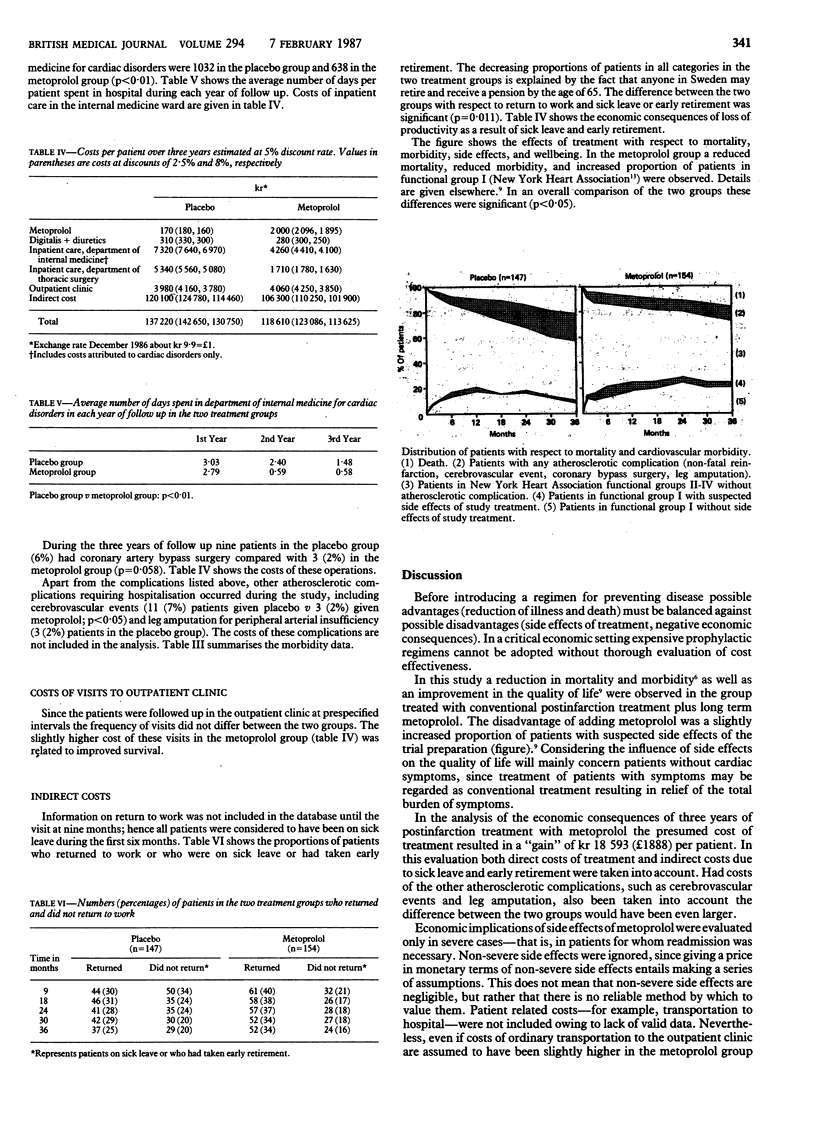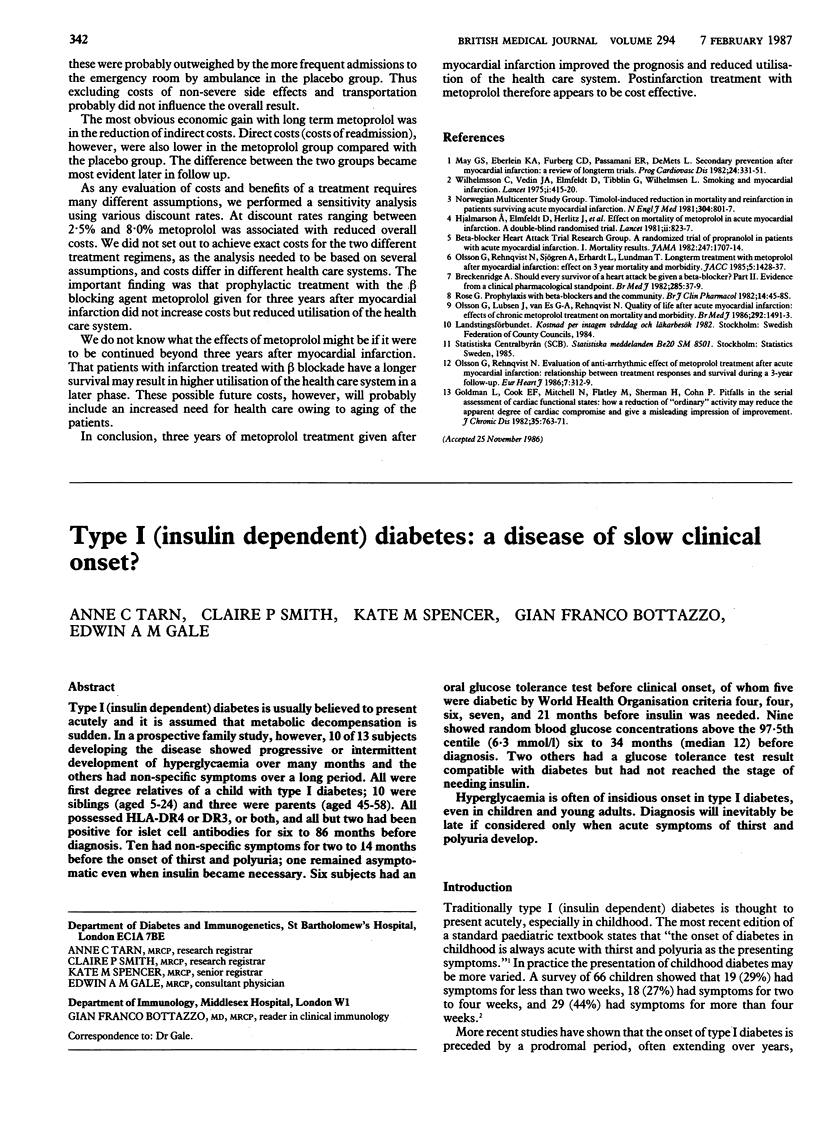Abstract
Treatment with certain beta adrenoceptor blocking agents after myocardial infarction reduces mortality and the incidence of reinfarction. Data from a randomised placebo controlled study of the beta 1 selective blocker metoprolol given as secondary prophylaxis were therefore analysed for the possible cost effectiveness of extending this treatment to the general population of patients with myocardial infarction. Metoprolol 100 mg twice daily and matching placebo were given to 154 and 147 patients, respectively, for three years. During this period drug costs for the beta blocker, digitalis, and diuretics were analysed as well as costs of readmission for cardiac problems and indirect costs arising from sick leave or early retirement. Active treatment with metoprolol significantly reduced costs of readmission as well as indirect costs. The net effect per patient over the three years was a reduction of roughly kr 19,000 (1930 pounds). These results suggest that beta blocker treatment given as secondary prophylaxis after myocardial infarction is highly cost effective.
Full text
PDF



Selected References
These references are in PubMed. This may not be the complete list of references from this article.
- Breckenridge A. Should every survivor of a heart attack be given a beta blocker? Part II. Evidence from a clinical pharmacological standpoint. Br Med J (Clin Res Ed) 1982 Jul 3;285(6334):37–39. doi: 10.1136/bmj.285.6334.37. [DOI] [PMC free article] [PubMed] [Google Scholar]
- Goldman L., Cook E. F., Mitchell N., Flatley M., Sherman H., Cohn P. F. Pitfalls in the serial assessment of cardiac functional status. How a reduction in "ordinary" activity may reduce the apparent degree of cardiac compromise and give a misleading impression of improvement. J Chronic Dis. 1982;35(10):763–771. doi: 10.1016/0021-9681(82)90087-x. [DOI] [PubMed] [Google Scholar]
- Hjalmarson A., Elmfeldt D., Herlitz J., Holmberg S., Málek I., Nyberg G., Rydén L., Swedberg K., Vedin A., Waagstein F. Effect on mortality of metoprolol in acute myocardial infarction. A double-blind randomised trial. Lancet. 1981 Oct 17;2(8251):823–827. doi: 10.1016/s0140-6736(81)91101-6. [DOI] [PubMed] [Google Scholar]
- May G. S., Eberlein K. A., Furberg C. D., Passamani E. R., DeMets D. L. Secondary prevention after myocardial infarction: a review of long-term trials. Prog Cardiovasc Dis. 1982 Jan-Feb;24(4):331–352. doi: 10.1016/0033-0620(82)90010-x. [DOI] [PubMed] [Google Scholar]
- Olsson G., Lubsen J., van Es G. A., Rehnqvist N. Quality of life after myocardial infarction: effect of long term metoprolol on mortality and morbidity. Br Med J (Clin Res Ed) 1986 Jun 7;292(6534):1491–1493. doi: 10.1136/bmj.292.6534.1491. [DOI] [PMC free article] [PubMed] [Google Scholar]
- Olsson G., Rehnqvist N. Evaluation of antiarrhythmic effect of metoprolol treatment after acute myocardial infarction: relationship between treatment responses and survival during a 3-year follow-up. Eur Heart J. 1986 Apr;7(4):312–319. doi: 10.1093/oxfordjournals.eurheartj.a062069. [DOI] [PubMed] [Google Scholar]
- Olsson G., Rehnqvist N., Sjögren A., Erhardt L., Lundman T. Long-term treatment with metoprolol after myocardial infarction: effect on 3 year mortality and morbidity. J Am Coll Cardiol. 1985 Jun;5(6):1428–1437. doi: 10.1016/s0735-1097(85)80360-0. [DOI] [PubMed] [Google Scholar]
- Wilhelmsson C., Vedin J. A., Elmfeldt D., Tibblin G., Wilhelmsen L. Smoking and myocardial infarction. Lancet. 1975 Feb 22;1(7904):415–420. doi: 10.1016/s0140-6736(75)91488-9. [DOI] [PubMed] [Google Scholar]


